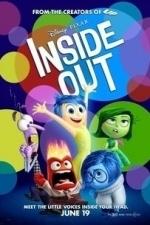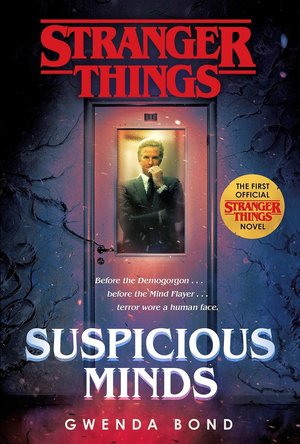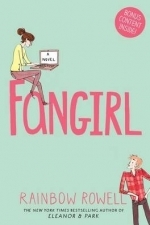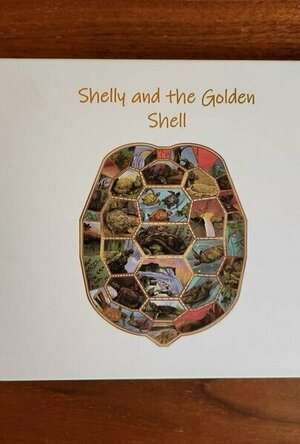
Shelly and the Golden Shell
Book
Uncover the magic of self-discovery with Shelly, the turtle who finds her true colors in a world of...
The Dragon Flyers Series: Books 1-3: The Dragon Flyers Collection
Book
A secret club. An evil foe. Three friends against incredible odds … All David wants is to be a...
middle grade middle grade fantasy fantasy mg fantasy
Movie Metropolis (309 KP) rated Inside Out (2015) in Movies
Jun 10, 2019
2015 marks the first time the studio will release two films in the same year, with The Good Dinosaur coming to cinemas in December and the subject of this review, Inside Out, in this year’s busy summer season.
But has this increased workload for Pixar’s animators resulted in a poorer quality movie?
Inside Out follows the story of young Riley, an eleven-year-old girl coming to terms with growing up in a new home away from her friends and the neighbourhood she knows and loves.
Deep inside her head, however, we find a whole host of colourful characters controlling Riley’s emotions. Joy, Sadness, Fear, Anger and Disgust all play a part in keeping her level-headed. Unfortunately, after a near disaster it falls on upbeat Joy and ever-blue Sadness to bring Riley back to who she once was.
Inside Out continues Pixar’s trend of creating beautifully animated films that really strike a chord with audiences. The sheer amount of colour is absolutely breath-taking and children will find much to enjoy in both the central characters and the numerous environments inside Riley’s head, while adults will love the stunning recreation of San Francisco in all its bustling glory.
The cast, which includes voice work by Bill Hader (Monsters University), Kyle MacLachlan (Desperate Housewives) and Diane Lane (Man of Steel) all do sterling jobs in bringing their characters to life but it is in Phyllis Smith, who plays Sadness, that we find the best portrayal.
A relatively unknown actress with few film credits to her name, Smith is truly wonderful as the little blue lady who keeps a check on the more upsetting moments in Riley’s life.
Elsewhere, Pixar has once again created a story that really focuses on the themes of growth, family bonding and what it means to grow up in today’s society with numerous cultural references that children and adults alike will enjoy.
However, it’s important to note that Inside Out is one of the more emotional films Pixar has created. At numerous points throughout the movie there were a couple of children in the cinema wiping away the tears – though this shows how heavily invested in the characters they became.
Unfortunately, despite being 94 minutes in length, Inside Out does feel a little drawn out in places and lacks the deeper storytelling elements that has made some of the studios other films so charming. This isn’t to say it lacks charm, but it’s in slightly shorter supply here.
Overall, Pixar has added another cracking film to its ever-increasing roster. Whilst not hitting the heights of Wall.E or Toy Story, it makes for a memorable and sensible film for the whole family to enjoy.
It’s the perfect start to the summer holidays. Roll on The Good Dinosaur.
https://moviemetropolis.net/2015/07/26/a-delightful-treat-inside-out-review/

Get Money! Geldmagnet werden mit Hypnose
Business and Lifestyle
App
GET MONEY! BECOME A MONEY MAGNET BY HYPNOSIS • Take a more relaxed approach to financial matters...

AniMatch: Animal Pairs and Sounds Matching Game
Games and Entertainment
App
AniMatch is great FUN for kids and adults alike! "This is a MUST HAVE APP for anyone with an...
Hazel (1853 KP) rated A Library of Lemons in Books
Dec 17, 2018
A Library of Lemons</i> is the most recent novel by children’s author Jo Cotterill. It is a moving story about a child’s perception of a life heavily affected by loss and grief, and the impact a positive friendship can bring. Calypso is only ten years old but has the reading age of someone much older. In fact she loves books so much that she prefers them to interacting with other people. Since her mother’s death five years previously, Calypso’s father has distanced himself from the world, focusing on writing and reading in his study, and has encouraged his only daughter to do the same: “be your own best friend.” However, a new girl at school causes Calypso to question and change the way she views the world.
Despite never having had a friend at school, Calypso quickly develops a strong friendship with Mae who also has a passion for reading. The difference is Mae lets herself feel emotion and is happy to let other people into her life, a concept that is initially alien to Calypso. As time goes on Calypso realizes she is the happiest she has ever been and that Mae has filled a gap she did not know was there. Regrettably, her newfound contentment is shattered on discovering that something is wrong with her father, and that he has developed an unhealthy obsession with lemons…
From the very beginning the reader is shown how difficult Calypso’s life is. She often comes home to a cold, dark house where she has to fix herself her own dinner from a very limited supply of food. Yet until Calypso meets Mae, she does not realize that there is anything wrong with this. Once Calypso learns that her father is suffering with depression – something that older readers will already have guessed – she sees how unfair life is for her and notices that she is very different from other children her age. This is a heartbreaking situation for readers to imagine, but Calypso’s strength as a young carer is admirable – similarly to characters in some of her favourite books, such as<i> Anne of Green Gables</i>.
There are so many well-known novels referenced in <i>A Library of Lemons</i>, which emphasizes Calypso’s love of literature. Although Cotterill has included children’s classics amongst these titles, it is doubtful that young readers will be familiar with them all. This poses the problem that certain allusions to characters or storylines will be lost, however if the youngsters are just as passionate about reading as Calypso is, they may be inspired to seek out these famous works.
I was initially drawn to <i>A Library of Lemons</i> because I had loved Cotterill’s previous novel, <i>Looking at the Stars</i>. I was not aware at first that this novel tackled mental illness – which was not a problem as I often read books of that genre – but I was expecting something powerful and moving. And that is what I got. I much preferred <i>Looking at the Stars</i>, which I thought was a lot more emotional and shocking – a refugee camp in a third world country – however <i>A Library of Lemons</i> is still a beautiful story with deep and quotable prose.
Before I finish this review I would like to praise Cotterill for the way she dealt with the taboo subject of mental illness. Often illnesses of this nature are either glamourized or stigmatized, neither of which occurred in this novel. Cotterill’s portrayal of depression and its affects on both sufferer and child are extremely realistic. The way that the book ends is also true-to-life. There is no happy ever after, no amazing cure – but there is hope, a glimpse of recovery and a better future.
Although Calypso is ten, her advanced reading age and the difficult subject matter result in a book that is more suitable for young teenagers. Young and old adults will also enjoy it too, especially those who can relate to certain situations Calypso has to deal with. <i>A Library of Lemons</i> is definitely a story to read if you are a lover of books - a bookworm. You will not be disappointed.
Hazel (1853 KP) rated Hyacinth Girls in Books
Dec 7, 2018
Hyacinth Girls</i> is the beautifully written debut novel by Lauren Frankel. Rebecca is the guardian of thirteen-year-old Callie who, despite phone calls from school, believes Callie can do no wrong. When Callie is accused of bullying another student, Rebecca easily turns the story around to make Callie the victim.
The story begins with a prologue in which a billboard is being erected featuring Callie’s face and the words “Do you know your children?” This implies that something tragic happens to Callie, but as we read, we question exactly what this is. Was Callie involved with the bullying at school, or was she the one being bullied? Callie has not exactly had an easy life with both her parents dying when she was five, and therefore Rebecca often glosses over the true meanings of Callie’s behaviour, insisting that Callie is acting out of grief.
As well as the question of what happens to Callie, the readers are plagued with many other questions as the story goes on. For example: How did Callie’s mother, Joyce, die? How did her father die? Who is her father? Who is sending Rebecca letters from prison? These queries get answered toward the end of the book thus encouraging readers to continue in order to sate their curiosity.
It is interesting to see how an adult interprets children’s behaviour based upon their own lives and experiences as well as jumping to conclusion about the way the child is feeling. <i>Hyacinth Girls</i> provides both the adult and the child the opportunity to express their point of view. Rebecca begins by trying to understand what Callie is going through, and getting it wrong, as well as introducing the reader to the past and present situation. Callie, on the other hand, reveals the truth.
Although not essentially a young adult novel, Callie’s narrative makes it suitable for teenagers as well as adults. The theme of bullying is something many young people may be familiar with from either being a victim, the cause or a bystander. Parents, on the other hand, will easily relate to Rebecca as she tries to understand her best friends daughter.
Overall <i>Hyacinth Girls</i> is a great book with a very intense theme. It is so realistic that it creates a sense of shock as we realize that there are school children around the world experiencing all the things mentioned within the story. Hopefully this novel will open readers’ eyes and make them more aware of the things they do and how they affect other people.
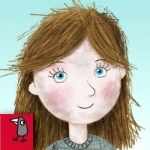
Cinderella by Nosy Crow
Book and Education
App
*** Major new update! *** A brand new, trilingual edition of our award-winning Cinderella app, with...
Hadley (567 KP) rated Stranger Things: Suspicious Minds in Books
Jun 10, 2019
Although the series has more than one book, and no end in sight, Bond was only chosen to do this novel. 'Suspicious Minds' is categorized under Young Adult books, but with the heavy Vietnam content, it's not considered that many young adults today can actually relate with this story or even understand the devastating effects of a looming draft hanging over the heads of young men throughout America in the 1960's. But Bond does a wonderful job in relating the emotional state of this era through our main character, Terry. Another subject that Bond does a fantastic job of explaining in 'Suspicious Minds' is the taboo of being a pregnant, unwed mother in this era, something that seems to be making headlines again in the States nearly 60 years later.
Bond shows us a young Dr. Martin Brenner, with neatly styled brown hair and an almost unlined face, as well as a more lively Terry Ives (which only season 2 has shown a very short flashback sequence of Terry being mobile before her dreaded consequence from being associated with the human experiments). We find out that the reason Terry volunteered for the experiment is due to her father's service in WWII, and wanting to make the world a better place. Bond brings in the other important characters, who also volunteered for the experiments, quickly bonding the four as friends for life.
As far as characters go, these four are written very well. Although Terry is the main character of 'Suspicious Minds,' we get to see from the viewpoints of all people, including Brenner. Bond gives the reader a short background on what LSD is and where it came from when the time comes for the experiments to begin. Brenner doesn't really explain why he gives LSD to the volunteers, but only that it is part of a secret experiment. Even when Terry is placed in a sensory deprivation tank, he doesn't reveal anything to her, and Bond does a great job of keeping the characters enough in the grey area of knowing that it's believable. Even at one point, when Terry begins to suspect something strange from the experiments, she keeps the belief that whatever is going on at Hawkins Laboratory must be important: " 'But you can't see it's important?' Terry leaned in close, and they kept their voices down as other students walked past. 'They just called up the school and told them to give me Thursdays off and I'm getting credit for it? They're tying our grades to doing this. And no one asked any questions. They just agreed. I have to keep going.' " Bond eloquently keeps the mystery going.
This mystery is even interesting to those who know what happens in the end. In 'Stranger Things,' Terry is introduced as a comatose woman in a rocking chair- who happens to be Eleven's mother. We have never met Gloria, Alice or Ken. The three become very close to Terry, and they all somehow escape from Brenner's grasp, but they also end up joining in Terry's pursuit of getting Eleven/Jane back to her mother. Fans of the show might be left asking what happened to these three enjoyable characters? I haven't seen any plans for a part two of this story, so we may be left not knowing what happened or if the three are even still alive today (in the Stranger Things' era). Even more enjoyable is the random use of J.R.R. Tolkien's 'The Lord of the Rings,' where in one scene, Alice and Terry decide to name their small group 'The Fellowship of the Lab.' Any veteran reader will be happy to see a classic brought up in a newer book of today.
And also of interest, fans will recognize a little girl who is frequent throughout the story: Eight a.k.a. Kali. We never get to see through Kali's perspective, but the reader does get to see the multitude of her abilities. For instance, Kali is able to scare personnel in the lab by causing the hallucination of tidal waves inside the building, only to stop when Brenner (or Papa to her) gives her her favorite sweet: Hostess cakes. Other than that, Kali is like any child; she throws tantrums and rebels from her Papa, sometimes to the laughter of the reader.
One point, Terry even meets with Kali in her LSD induced state: " Terry shook her head. 'There can be. He's just a man. He can't know everything.' She paused. 'Does he hurt you? Papa?' Kali frowned, but she didn't answer. 'If he does... I can help you.' Terry had to make her understand. The little girl shook her head. 'I don't think so. I might be able to help you, though.' A field of yellow sunflowers grew up around them. A rainbow arcing over the golden tops." Terry, understandably, begins to scheme about how they can help Kali to escape the lab.
Bond does a great job of transitioning between Terry's point of view to the other characters' viewpoints. We get a young woman named Gloria, who has a secret obsession with comic books (especially X-Men). A hippie-looking man named Ken, who claims he is psychic, but just happens to have a lot of hunches that come true. And last, but not least, another young woman named Alice, who shows up in grease covered overalls and curly black hair, explaining that she works for her uncle's garage and that she loves machines. These three are delightful to read about, and the story would be boring without them.
This book was the perfect novel to answer questions fans may have had about Eleven's mother. Bond writes smoothly and easily enough that you may find yourself wanting to read just one more page before setting the book down for the evening. She drags you into the world of the 1960's and helps young readers to feel the emotional time that it was for women like Terry. But with only a few inconsistencies here and there, 'Suspicious Minds' leaves us wanting more. If you are a fan of 'Stranger Things,' I say that this is a must-read! Highly recommend!
Kaysee Hood (83 KP) rated Fangirl in Books
Oct 3, 2017
As we grow to become adults we must venture through events of many firsts like kissing, love, heartbreak, and more. It is how we figure out who we are and who we are meant to be even if sometimes the road is not so easy to travel; however, for Cath she was never alone to experience life with her twin sister. This was until Freshmen year of college when Wren wants to separate herself from Cath because they have done everything together always for their whole lives. Cath does not want this. She’s scared to not have Wren feet away from her. She fearful of the strangeness college will offer. She terrified she’s crazy and people will find her weird for her fanfics of Simon and Baz.
Wren does not give in. She moves in with her roommate, Coutrny, and spends her free time getting drunk at parties. She distances herself from Cath to the point they do not even speak to one another. Thus Cath finds out who she is under the layers she’s wrapped around herself since her mom left without Wren to hold her hand to keep her steady. Oh boy, does this journey give her more adventures she has ever had in the last eighteen years of life all because of Nick (writing partner), Reagan (her roommate), and most importantly Levi (the boy who is always waiting outside her dorm for Reagan). There are other important characters at play in Cath’s life. Miniature quests wrapped around the biggest one of all: Cath learning to be her own person.
Rowell’s style is very pleasing when it comes to the flow between Cath around people in real life and how Cath is when she is logged in FanFixx posting Carry On, Simon chapters. We can relate to the girl who has hidden in her room relying on Wren to give little breathes of life from the one she is not living. She is realistic and not a carbon copy twisted to fit into a new plot to gain readers. In general Rowell writes her characters exquisitely as they stand out being not only realistic versions of possibly real people we could run into on the street, but all have their own lives not pieced together solely to further the plot for Cath alone shown with each word written through their actions or when they speak. Each could stand alone as interesting additions instead of misplaced messes. Even the subplots do not feel tacked on and further the story until the final page is done where it is easy to see how each line led to the end.
By the end of it all none of it felt overdone or predictable and I personally stood behind Cath cheering for her. Anyone could read Fangirl and enjoy Cath’s voyage alone as a Freshmen in college, but I think the fangirls and fanboys might enjoy it a bit more. Pick up a copy as soon as possible to learn how Cath’s story ends.

